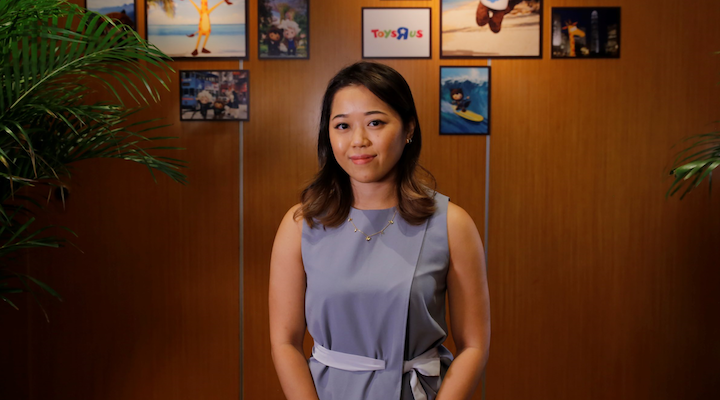Retailer Toys “R” Us has traditionally anchored its business on experiential brick-and-mortar stores, but five years ago, the company embarked on a project to integrate its pan-Asian online and offline retail presence.
The success of the Toys “R” Us digital transformation process became even more crucial when the Covid-19 pandemic arrived as the retailer had to pivot quickly to serve loyal customers stuck at home due to government social-distancing orders.
“We have traditionally been very focused on the in-store experience and creating a fun environment for customers to come in and shop, and for kids to play,” explains Tim Halaska, regional GM of digital strategy at Toys “R” Us, a guest speaker at a webinar organised by Salesforce this month. “So during the last five years, we’ve really changed our momentum and looked at the digital strategy and what we’re doing.”
Retailers can enjoy a recording of the full webinar here.
Toys “R” Us chose to partner with Salesforce to adopt a cloud-based solution and create a centralised system across all of its Asian markets. Before the change was implemented, Toys “R” Us had independent websites in various markets, which diluted the focus and led to duplication of processes and marketing plans. Some did not even have a direct-to-consumer online presence.
“So we built a regional team, which supports the local markets, so they could focus on their sales, not the processes of keeping individual websites running,” says Halaska.
The result was a united team spanning multiple markets, much more engaged and which was ready to ramp up the focus when consumers were forced to shop online.
“It has actually caused the wider business to really get behind e-commerce, where before online was not really a focus of the business.”
Given Toys “R” Us has more than 200 stores across China, and more in other Asian markets, e-commerce still accounts for a relatively small share of overall sales, but Halaska says online growth has been “exceptional” during the last two years.
Physical stores will always be a core part of the brand’s offer in Asia, because they offer a place where children can enjoy an experiential experience, he says. “So even though you can come online and shop, we still are going to have that in-store experience where mom will take the children after school. The challenge for us became how to capture that in-store magic and replicate it online.
“All the products that are in our stores are on the website, along with consistent pricing.” Promotions have been aligned so that they start at the moment an email is sent out. A customer can buy something online right away, or go into a store the next day for the same deal.
“We’re really focusing on removing those friction points and as a result, we’re seeing the whole business work together to achieve this one solution for our customers,” says Halaska.
Salesforce is a global partner of Toys “R” Us and the two companies agreed at the outset that having multiple sophisticated websites in different markets would not be cost effective.
“Now we’ve got an equal experience online across all markets, big or small, with all the same functionality and experiences.”
That has brought benefits such as improved cloud-based performance of the integration of offline and online systems making it easier to onboard new brand partners in multiple markets simultaneously. Sharing resources also means smaller digital teams are needed in each market.
“Previously,” recalls Halaska, “if we wanted to sell Jeffrey (the Toys “R” Us giraffe mascot) online, we would have to take a photo of him in every market, then each one would write the copy, and upload the product individually. Now we can upload that product once and all the markets can have it. So now our teams are free to focus on sales.
“We’ve also had a lot of success with things like Einstein recommendations and AI on the website, which help draw customer spending.”
The partnership has also allowed Toys “R” Us to connect with its customers and monitor their behaviour both online and in store. In turn, that has enabled better communication with its loyal customers, whether that be through email marketing, on the website or through social communications.
‘Customers don’t see channels’
Tiffany Lung, a retail analyst at Inside Retail who spoke during the webinar, said Toys “R” Us was a great example of a retailer adapting to the omnichannel landscape.
“The reality is customers don’t see channels – they only see your brand as a whole. Yet systems and processes within these channels remain highly siloed which is why a lot of retailers face difficulties in creating a seamless cross-channel experience,” says Lung. “That is why it is very important to have a unified front.
“It is quite straightforward, as long as you know how to leverage data, using the right tools to communicate with customers to capture the wallet share, retain loyalty and drive revenue.”
Christine Tsai, solutions engineer at Salesforce, says adopting an omnichannel strategy was critical for retailers as they navigated the pandemic.
“When Covid hit, stores closed, events went virtual, but people still bought stuff and ate – they just changed the channel, going from physical sites to virtual sites.”
Customer behaviour changed enormously because customers started to experience the convenience of shopping online and now – even with the easing of lockdowns in many markets – their behaviour has changed.
“So what was once visionary, is now mandatory. Retailers who previously derived less than 10 per cent of their overall sales online, are now finding that share has gone up to as high as 30 per cent.”
Tsai says brands need to treat all customers online as real individuals, not anonymous datasets. But many retailers are challenged by having older legacy tools and siloed data. Further complicating this picture is that there are more connection points between brands and customers than ever before, such as social-media channels and Tik Tok.
New research from Salesforce has highlighted how nearly 6000 sales professionals are selling in a global crisis. Since the pandemic, for example, 58 per cent of sales reps think their job has changed forever. Salesforce’s latest State of Sales Report based on a survey of leaders, reps and operational teams around the world looks at what drives business resilience and sales growth during a crisis.
Another research resource available for retailers to download is Salesforce’s State of Marketing report, which explains the ways marketing has changed during the past year and how retailers can learn to adapt to changing trends and tactics. This includes the new mandate for marketing transformation, how customer data is driving more empathetic marketing along with how marketing KPIs are shifting – and how marketers are defining success in the post-pandemic marketplace.
Meanwhile, you can view a recording of the full 45-minute Inside Retail webinar online here.






